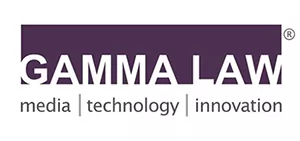- within Technology topic(s)
- in European Union
- within Technology topic(s)
- in European Union
- in European Union
- in European Union
- in European Union
- within Technology, Corporate/Commercial Law and Privacy topic(s)
- with readers working within the Banking & Credit, Media & Information and Retail & Leisure industries
AI and Web3 technologies are reshaping business decision-making across sectors, including financial services, healthcare, supply chain operations, and the creative economy. Web3 introduces decentralized systems built on blockchain infrastructure, enabling trustless, pseudonymous interactions that reduce or eliminate reliance on intermediaries. In parallel, AI delivers efficiency, scalability, and data-driven insights to these ecosystems. Their convergence unlocks significant opportunities for innovation, but also raises novel legal and regulatory issues that require thoughtful navigation.
AI and Web3: Emerging Use Cases and Legal Exposure
AI's core strength lies in processing large volumes of data, identifying patterns, and executing decisions with precision and speed. Web3, through decentralized protocols, offers enhanced transparency, user control, and system resilience. Together, they enable a new class of applications:
- Decentralized autonomous organizations (DAOs)
- AI-enabled smart contracts
- Predictive analytics within decentralized finance (DeFi) platforms
These developments are accompanied by new legal complexities, particularly in the areas of liability, bias, transparency, data protection, and financial regulation.
Liability and Accountability in Autonomous Systems
Traditional legal frameworks rely on clearly identifiable actors to assign accountability. In AI-augmented Web3 environments, autonomous decision-making often lacks centralized oversight, complicating the assignment of liability. Key questions arise:
- If an AI system causes economic loss, misuses proprietary data, or produces biased outcomes, where should liability rest—on the developer, the deploying entity, or another party?
- How should enforcement operate in decentralized networks with no central governing authority?
These issues are amplified by the opaque nature of many AI models, where the rationale behind decisions may not be readily interpretable. Regulatory bodies are beginning to respond. For example, the European Union has proposed a dedicated AI liability regime aimed at addressing these gaps, which could have significant extraterritorial implications for multinational organizations.
Algorithmic Bias and Discriminatory
Outcomes
AI systems are susceptible to perpetuating biases embedded in
training datasets. In decentralized contexts, where oversight
mechanisms may be limited or absent, the risk of discriminatory
outcomes is heightened. High-profile examples—such as biased
hiring algorithms or racially skewed risk
assessments—demonstrate the legal and reputational risks
involved.
In Web3 environments, where AI may drive governance decisions, financial transactions, or talent screening, biased models can impact users at scale. To mitigate exposure, organizations should prioritize key areas:
- The adoption of explainable AI techniques
- Periodic audits to detect and correct algorithmic bias
- Transparency mechanisms to maintain user trust and regulatory compliance
Transparency and Explainability in Decentralized Architectures
Web3 emphasizes decentralization, verifiability, and user control. However, these principles can be undermined by AI models, particularly deep learning algorithms, that lack interpretability. When AI decisions govern access to capital, governance rights, or platform participation, the inability to explain those decisions introduces both compliance and ethical concerns.
Organizations integrating AI into Web3 systems should consider several safeguards:
- Embedding interpretability requirements into their AI governance frameworks;
- Maintaining an appropriate level of human oversight over automated processes; and
- Avoiding over-reliance on algorithmic decision-making where human judgment remains critical.
Data Privacy and Security in AI-Driven Web3 Platforms
AI systems often depend on centralized data processing—an approach that may conflict with Web3's emphasis on user anonymity and decentralized control. This tension presents challenges under regulatory frameworks such as the General Data Protection Regulation (GDPR) and the California Consumer Privacy Act (CCPA).
Advanced AI models can re-identify individuals from anonymized data sets by detecting subtle correlations, potentially triggering privacy violations. To address these risks, organizations should implement:
- Privacy-by-design protocols;
- Consent-based data collection practices;
- Privacy-enhancing technologies, such as zero-knowledge proofs or federated learning, reconcile AI performance with decentralized privacy standards.
Financial Regulation and Securities Law Implications
AI-enabled trading algorithms operating within DeFi and digital asset ecosystems raise regulatory scrutiny around potential market manipulation and securities law violations:
- AI-driven bots executing trades may trigger questions around unregistered securities offerings or prohibited market behaviors (e.g., wash trading or spoofing);
- Malfunctioning or exploited AI systems may result in material losses, destabilize markets, or invite enforcement action.
- In light of these risks, businesses integrating AI into Web3 financial services should proactively evaluate their obligations under applicable U.S. and international securities laws, while also implementing governance structures to monitor and control automated financial activity.
Best Practices for Responsible AI Deployment in Web3
Organizations adopting AI within decentralized platforms should implement robust legal and compliance frameworks tailored to the unique attributes of both technologies:
- Governance and Compliance Policies:Develop AI governance frameworks defining acceptable use cases, risk assessment protocols, and internal accountability mechanisms. Conduct regular audits to detect and address algorithmic errors or biases.
- Contractual Risk Allocation:Structure agreements with AI vendors to include appropriate disclaimers, limitations of liability, and indemnification clauses to manage downstream legal exposure.
- Data Privacy Controls:Apply privacy-by-design principles, de-identify personal information where possible, and ensure user consent aligns with applicable data protection laws. Consider decentralized AI techniques that limit centralized data collection.
- Decentralization Strategies:Explore AI models that operate across distributed networks, reducing reliance on centralized infrastructure while improving system resilience and data security.
Conclusion and Strategic Considerations
The convergence of AI and Web3 technologies is accelerating innovation but also introducing complex legal challenges that require proactive oversight. As regulatory frameworks evolve to address the risks inherent in autonomous, decentralized systems, organizations must stay ahead of compliance expectations and market developments.
Firms that invest in sound governance structures, adopt privacy-conscious and explainable AI practices, and engage experienced legal counsel will be best positioned to mitigate risk and maximize opportunity in this rapidly transforming landscape.
To ensure legal readiness, organizations operating at the intersection of AI and Web3 should consult with advisors who are deeply familiar with emerging regulatory regimes and the strategic considerations unique to these technologies.
The content of this article is intended to provide a general guide to the subject matter. Specialist advice should be sought about your specific circumstances.


